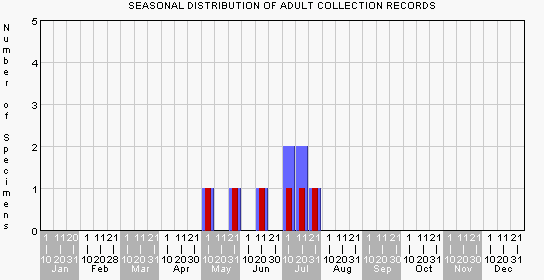Life Cycle
.jpg) The life of a Glossosoma
intermedium begins in the form of an egg.
The egg begins at the bottom of a moderate flowing
stream along its rocky surface. Around May,
the eggs starts to hatch and from them come the
larvae (Wallace 2011). The larvae would then
build itself a case as
a mean of protection from predators such as fish.
Depending on the situation the larvae may leave its
case and drift to find a habitat where food sources
are more abundant. The larvae has five instars
stages (Cavanaugh, Haro and Jones 2004). In
each it will become bigger through molting.
After each time it molts it will have to build
itself a new case (Cavanaugh, Haro and Jones 2004). Once the larvae is ready to reach adulthood it would
leave its case and swim ashore or climb onto an
emergent rock (Wallace2011). From there the
skin of the larvae would split open. The adult
would then emerge and fly away.
The life of a Glossosoma
intermedium begins in the form of an egg.
The egg begins at the bottom of a moderate flowing
stream along its rocky surface. Around May,
the eggs starts to hatch and from them come the
larvae (Wallace 2011). The larvae would then
build itself a case as
a mean of protection from predators such as fish.
Depending on the situation the larvae may leave its
case and drift to find a habitat where food sources
are more abundant. The larvae has five instars
stages (Cavanaugh, Haro and Jones 2004). In
each it will become bigger through molting.
After each time it molts it will have to build
itself a new case (Cavanaugh, Haro and Jones 2004). Once the larvae is ready to reach adulthood it would
leave its case and swim ashore or climb onto an
emergent rock (Wallace2011). From there the
skin of the larvae would split open. The adult
would then emerge and fly away.
.jpg)
When laying the eggs, the adult female caddisfly
would dive into the stream attaching itself to the
bottom of the stream (Wallace 2011). It would
then lay eggs in groups. After laying the eggs
it would then leg go of the rocks that it was
holding onto and float to the surface. Upon
reaching the surface it would then fly away.
Glossosoma intermedium are bivoltine (Cavanaugh, Haro and Jones 2004). They produce two groups of offspring in a year, one in summer and one in winter. The summer one range from May to November and the winter range from November to April (Cavanaugh, Haro and Jones 2004).
Graph showing the distribution of adults Glossosoma intermedium collected throughout the year
Theblue bar represent the adults collected in a specific date range
The red bar
represent adults collected in a specific date range however
those obtain at the same location and date are
counted as one
